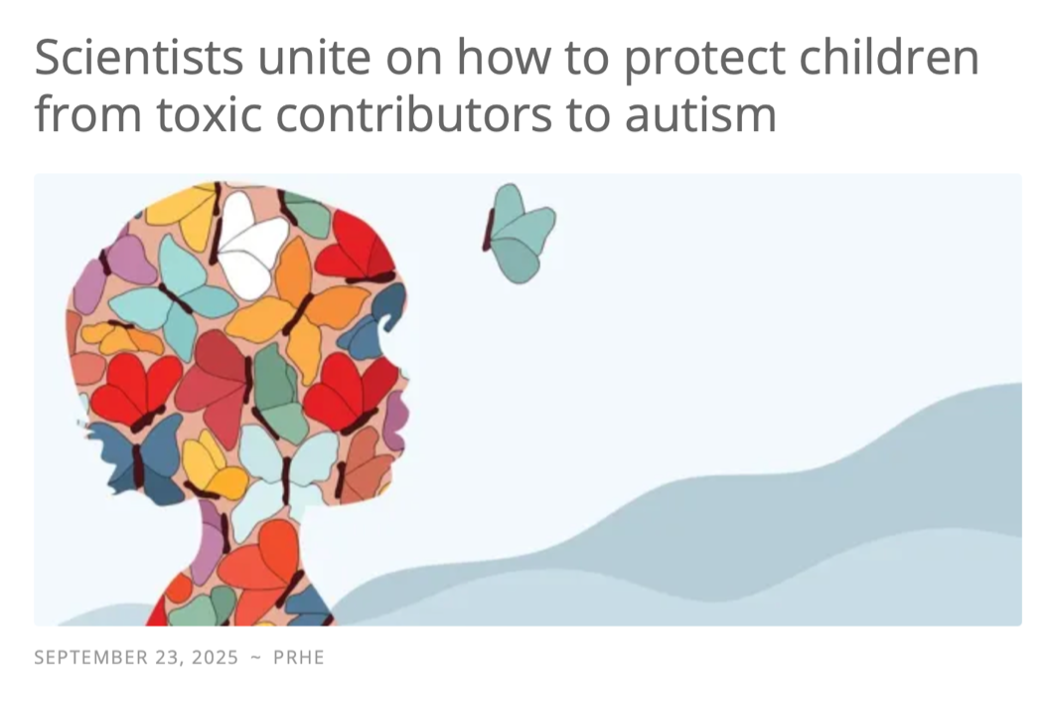A cluster of recent studies has shown that we are systematically lowering our children’s IQs by exposing them to pesticides, particularly organophosphate pesticides like chlorpyrifos, the substance that contributed most significantly to my daughter’s cancer (Bouchard et al. 2011; Engel et al. 2011; Rauh et al. 2011). As if it were not bad enough that rates of disease linked to pesticide exposure are skyrocketing among children – of autism, ADHD, diabetes, and certain childhood cancers. We are also slowly whittling away at the store of intelligence in the next generation. At some point, will the cumulative effect on the population diminish our ability to solve the problem? The results of the studies are startling – or at least should be to anyone who is a parent or hopes to be one. Bouchard’s study found that children exposed before birth to organophosphate pesticides at the highest level – the highest 20% -- tested 7.0 IQ points lower than children exposed at the lowest level – the lowest 20%. Average on the IQ scale is 100; genius is pegged at 140 and disability begins at about 70. Keep in mind that those children in the lowest 20% of exposure are not, as they should be, at zero, or even non-testable levels. Keep in mind that we do not know if there is a “safe” level for these chemicals, a level below which no effects are seen. Recently, previously safe levels for lead (≤10µg Pb/L blood) have been found to be far too high; IQ deficits and other health effects are found at virtually any level above zero. Keep in mind that organophosphates are toxic chemicals that did not exist before humans invented them, used them for chemical warfare during World War II, and then remarketed them to consumers after the war, in an effort to preserve a chemical process that had already been developed. Children should not be exposed to any level of these chemicals, particularly before birth. Bouchard’s study was done on children of farm workers in California, who are indeed exposed to higher levels, but the levels were not incommensurate with those seen in the general population, which anyone can check by reading the CDC’s Biomonitoring Project at http://www.cdc.gov/biomonitoring/. Rauh’s study and Engel’s found extremely consistent results, even though they were working on an entirely different population: inner-city mothers and children in New York City. It is this kind of repeated, consistent warning that we should all heed: we are poisoning our children, and we cannot always predict the effects. Except that they are very unlikely to be good.
Would you notice if your child were a few IQ points lower? You could never know for sure. My son David, who was exposed to high levels of chlorpyrifos both before birth and after, is a bright engaging kid, but he has more difficulty with studying and school than his father or I ever did. Is it as a result of the exposure? We will never be able to say for sure, but the pain of considering that that may be the case is unbearable. One child suffered a horrific death from cancer at age eight from cancer; the other may never reach his full intellectual potential. The point is that no one should ever have suffer these kinds of regrets, particularly when their freedom to choose for their own child has been taken from them.
Our entire society should feel haunted by regrets. Consider the results of work done by David Bellinger, who considers the total IQ points lost across U.S. society. He makes the point that even low impacts, when those impacts are common, can have a huge influence on the population as a whole. The total number of IQ points lost to organophosphate pesticides is calculated at nearly 17 million; lead siphons off another nearly 23 million from national acuity. Together, these dwarf the number for preterm births, at 34 million, often justifiably recognized as a major cause of mental disability. ADHD accounts for another nearly 17 million. When you consider that many of the other causes of lost IQ points – like ADHD, pre-term birth, and childhood cancers – are also correlated with exposure to pesticides, the impact of pesticides on intelligence is staggering, though very seldom recognized.
The costs of IQ deficits have been calculated in terms of money lost per year. Losses have been tallied at 1.76-2.38% per IQ point (Grosse et al. 2002), or $17,815 per point over a lifetime (Gould 2009). Studies of income loss due to mercury exposure, another preventable environmental toxin, estimate 8.7 billion annual shortfalls (Trasande et al. 2005). Nationwide, we are likely coming up billions of dollars short because of IQ loss to pesticide exposure, additional billions for other environmental toxins like lead and mercury. None of this accounts for the loss of quality of life for the persons involved. How could that be measured? For people at the lower end of the spectrum, deficits may result in life-altering disability; at the upper end of the spectrum, the joy of genius is lost, or never known.
None of the costs, financial or emotional, are made public or attributed to the industries that cause these injuries. How efficient and effective is pest control or conventional farming, if these externalized costs were figured into the equation? The bottom line is that individual human rights are being violated in an astonishingly extensive way. Chemical companies have not been held responsible for their systematic poisoning of us and of our children, and we have not had the right to protect even our own bodies from their wares, all while they garner incredible profits for their toxic products. We need to put an end to this, and it will not be easy, given the extent to which these companies are entrenched in American politics. President Obama recently signed legislation widely called the “Monsanto Protection Act” for the underhanded way it protects companies from legal action resulting from the terrible consequences of their products. Even if genetically modified products should be deemed hazardous to human health, this law allows Monsanto and other companies to continue producing them. Is this foresight that exceeds even the cold-blooded calculations of the tobacco companies?
There are activists who are fighting this battle – among them Environmental Working Group (EWG), Environmental Law and Policy Center (ELPC), Women's Voices for the Earth, Pesticide Action Network (PAN), Beyond Pesticides, and Healthy Child, Healthy World. We should all be doing all we can to oppose the billion-dollar corporations who are currently poisoning our children, through political action, consumer power, and speaking out in our everyday lives. Just as climate change deniers wish to create a climate of doubt and prevent action to avert catastrophic climate change because of their own narrow, selfish interests, so chemical companies would like you to believe that there is doubt about what causes cancer, ADHD, IQ losses, and other illness in children. In fact, the preponderance of scientific evidence against these chemicals is all on one side and has been for decades.
References
Bouchard MF, Chevrier J, Harley KG, Kogut K, Vedar M, Calderon N, et al. 2011. Prenatal exposure to organophosphate pesticides and IQ in 7-year-old children. Environ Health Perspect 119:1189-1195.
Engel SM, Wetmur J, Chen J, Zhu C, Barr DB, Canfield RL, et al. 2011. Prenatal exposure to organophosphates, paraoxonase 1 and cognitive development in childhood. Environ Health Perspect 119:1182-1188.
Gould E. 2009. Childhood lead poisoning: conservative estimates of the social and economic benefits of lead hazard control. Environ Health Perspect 117: 1162-1167.
Grosse SD, Matte TD, Schwartz J, Jackson JR. 2002. Economic gains resulting from the reduction in children’s exposure to lead in the United States. Environ Health Perspect 110:563-569.
Rauh V, Arundjadai S, Horton M, Perera F, Hoepner L, Barr DB, et al. 2011. Seven-year neurodevelopmental scores and prenatal exposure to chlorpyrifos, a common agricultural pesticide. Environ Health Perspect 119:1196-1201.
Trasande L, Landrigan PJ, Schechter C. 2005. Public health and economic consequences of methyl mercury toxicity to the developing brain. Environ Health Perspect 113.5:590-596.











